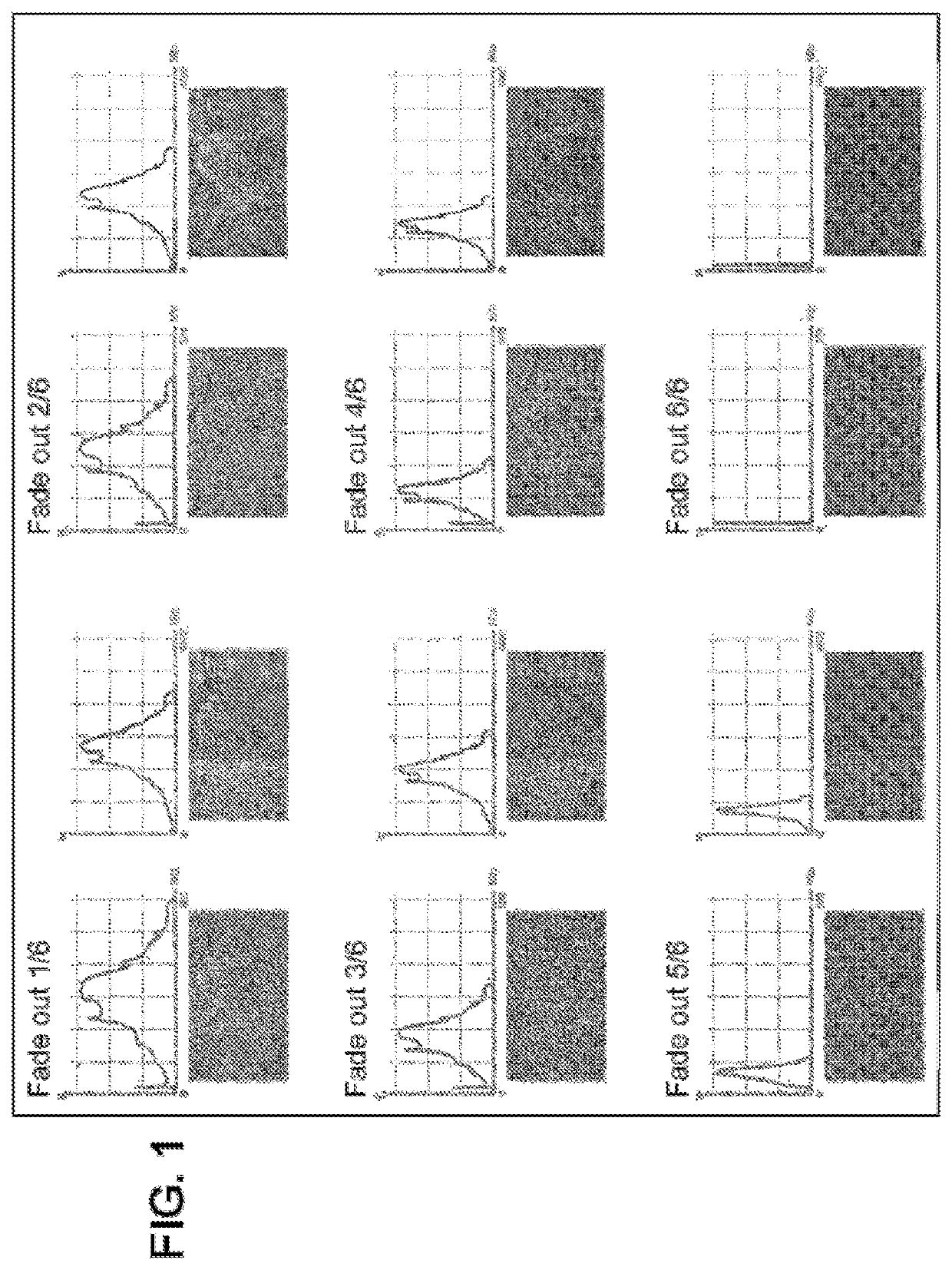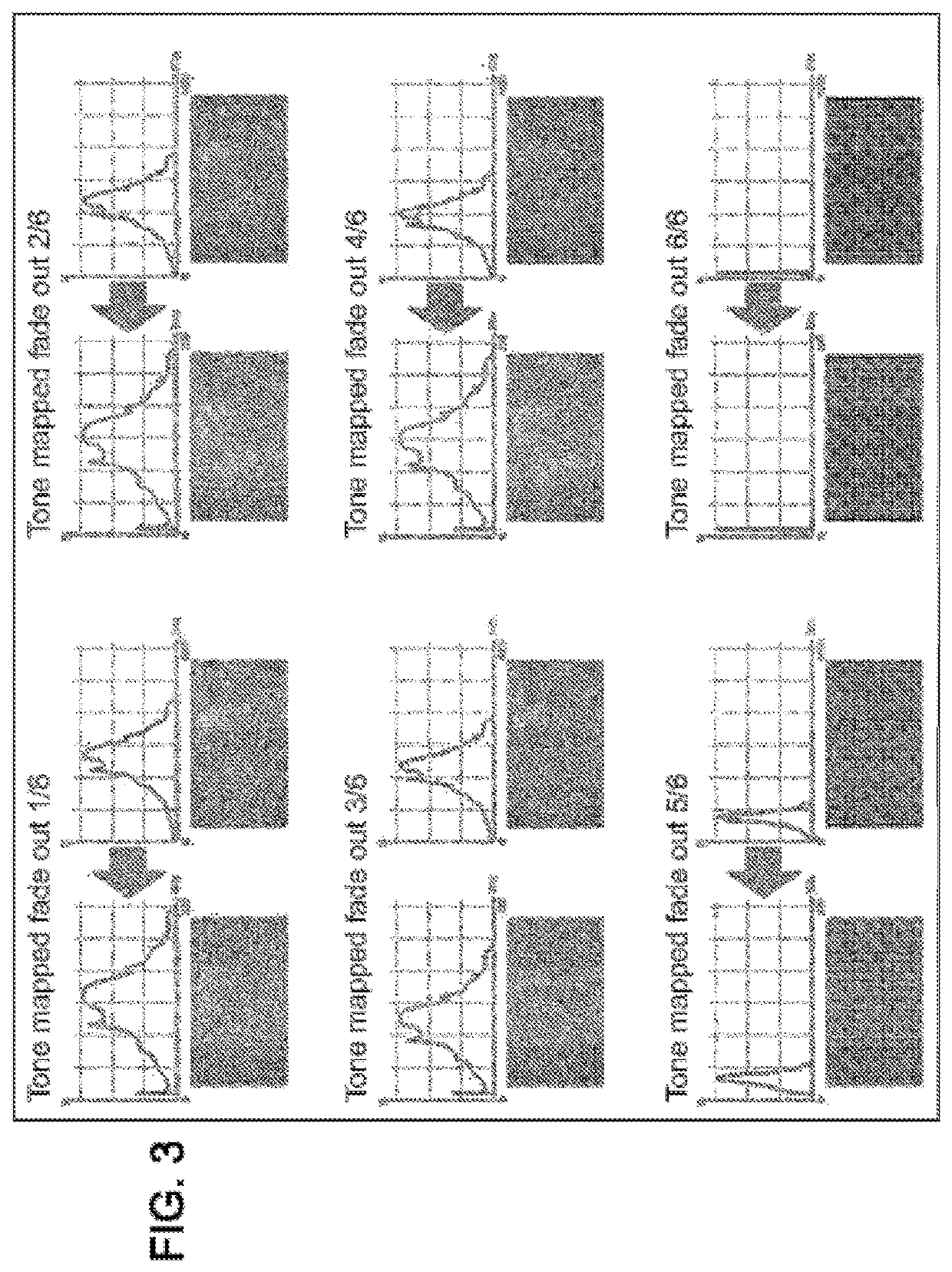Dynamic range compression method
- Summary
- Abstract
- Description
- Claims
- Application Information
AI Technical Summary
Benefits of technology
Problems solved by technology
Method used
Image
Examples
Embodiment Construction
[0058]FIG. 4 illustrates an exemplary implementation of the subject disclosure. A detection module MOD_DETECT 402 detects, from incoming HDR video content “Video HDR live”, a transition effect such as a fade effect for example. The video content “Video HDR live” refers to HDR video content broadcast in real time. In the incoming video content “Video HDR live”, the maximum dynamic range and the dynamic range actually used are defined.
[0059]The detection module MOD_DETECT 402 which represents a transition effect detection module indicates the probability of being in a transition. It operates with N memory frames, where N is a natural integer greater than or equal to two. The detection module MOD_DETECT 402 makes it possible to extract parameters associated with the detected transition effect.
[0060]The parameters associated with the detected transition effect are then transmitted to an SDR dynamic range calculation module represented by MOD_CAL_DYN_SDR 403 in FIG. 4. A transformation c...
PUM
 Login to View More
Login to View More Abstract
Description
Claims
Application Information
 Login to View More
Login to View More - R&D
- Intellectual Property
- Life Sciences
- Materials
- Tech Scout
- Unparalleled Data Quality
- Higher Quality Content
- 60% Fewer Hallucinations
Browse by: Latest US Patents, China's latest patents, Technical Efficacy Thesaurus, Application Domain, Technology Topic, Popular Technical Reports.
© 2025 PatSnap. All rights reserved.Legal|Privacy policy|Modern Slavery Act Transparency Statement|Sitemap|About US| Contact US: help@patsnap.com



